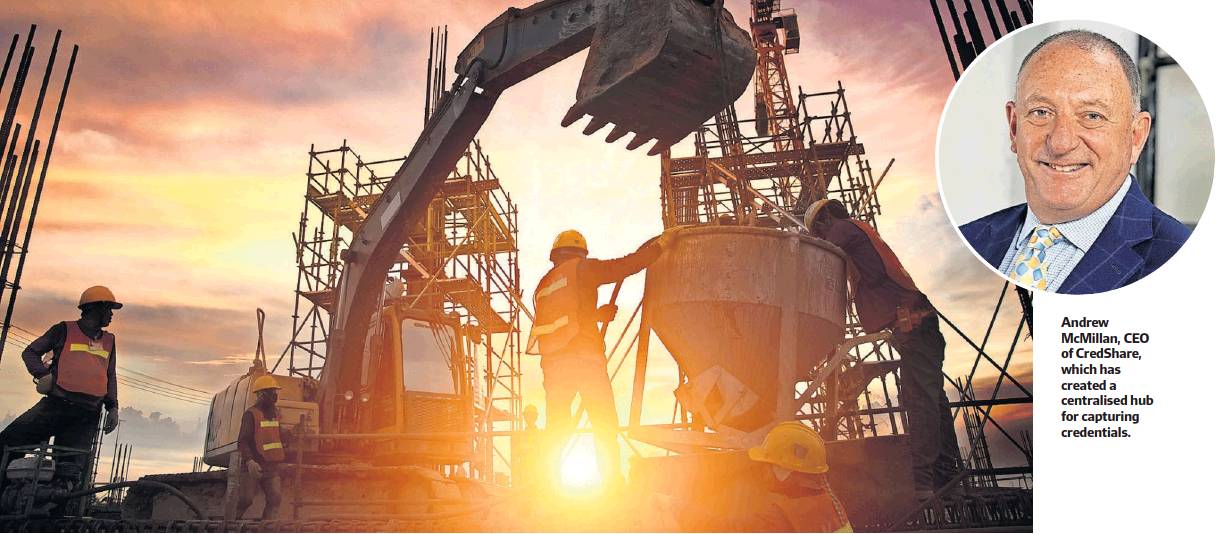Cloud solves credentials conundrum
Until this yeara plumber in NSW wasn’t the same as a plumber in Western Australia or Queensland – at least, not according to their credentials.
But from July 1 they will be when the federal government’s new framework of automatic mutual recognition (AMR) comes into force.
The framework will solve a decades-old problem: registrations in one state, for occupations ranging from electricians to gasfitters, real estate agents and even teachers, aren’t recognised in other states or territories.
The AMR is a scheme to automatically recognise occupational registrations throughout Australia, so that NSW plumber won’t have to reregister or pay extra fees in WA or Queensland, and vice versa.
Although mutual recognition of licensed occupations among states and territories in Australia already exists, interstate workers must apply for recognition of their existing licence and pay another fee to work in the state or territory. The Australian Chamber of Commerce and Industry says there are more than 180 occupational regulators in Australia and New Zealand.
‘‘Over 60 per cent of businesses surveyed mentioned the cost of compliance to get regulatory approvals and licences came at a large cost to their business,’’ the Chamber said in submission on the AMR.
‘‘Although licensing is critically important to protect consumers, the public, and worker health and safety, there should be scope to reduce the red tape hampering business conditions and productivity.’’ The AMR was brought in among post-pandemic recovery reforms designed to encourage worker mobility and therefore stimulate economic growth around Australia.
A government paper in December found that more than 160,000 workers would benefit from the new regime, including as many as 44,000 people who would now work interstate who wouldn’t otherwise have done so.
PwC estimated that AMR could lead to an additional $2.4 billion in economic activity over 10 years.
But there is a gap between the legislative ideal and practice: registrations will still need to be approved in a person’s new state or territory, and businesses will need to somehow find out who has been approved – and who hasn’t.
‘‘It’s very well to say you can now share your credentials across borders, but how do those people share those details and how are companies to know who is authorised and who isn’t?’’ says Andrew McMillan, CEO of Australian workforce compliance technology provider CredShare.
Furthermore, from an employee perspective having to forever share these documents with a range of people is a privacy nightmare.
McMillan says the way to solve both problems lies in the cloud: CredShare has created a centralised hub for capturing credentials that gives workers control over who can see their registrations at any given time, and a simple enterprise dashboard that enables businesses to instantly keep track of who has up-to-date registrations and who doesn’t. This system for both individuals and enterprises also provides alerts when a credentials status changes.
What CredShare is replacing is the humble, and now no longer fit-for-purpose, spreadsheet.
‘‘Our platform allows organisations to track their workers’ and subcontractor’s workers’ credentials, all in one unified dashboard. They can view thousands of workers and their creds at a glance, manage who’s on which projects, and always ensure that your workforce is compliant,’’ McMillan says.
‘‘At the moment the tool of choice is a spreadsheet. It’s done badly and it isn’t a purpose-built tool.’’
MasterPlumbers in WA is an early adherent, leading a CredShare pilot as an easy way to manage workplace credentials as the start of the AMR regime looms.
While the free flow of information is a distinct step-up from the labour-intensive scrabble to keep track of a variety of hard- and soft-copy documents, it’s health and safety compliance where CredShare could save money and, potentially, lives.
‘‘The purpose of regulatory compliance is always good, but the doing of it is hard and that’s the problem our platform solves — the simplifying of sharing of data and meeting obligations,’’ McMillan says.
He points to the ever growing burden of regulations on businesses to ensure they have evidence they’re employing qualified people.
‘‘Workplace health and safety now includes industrial manslaughter penalties that can go up to $10 million. The concept of criminal liability is now a key tenet in most states and territories, which means that if you’ve been really reckless in the way you’ve been managing compliance, it could lead to imprisonment,’’ he says.
‘‘Our tool can more than halve compliance costs by letting businesses ensure they have all their paperwork in order and, more importantly, can be confident that their employees and subcontractors do as well.
‘‘Industry has been trying to do old things in new ways for compliance. To date this has failed.
‘‘CredShare brings a new level of capability designed to operate in the current and future technology environment. Better, safer, easier compliance is our motto and that is exactly what we are delivering to support the cross-jurisdiction requirements of the AMR.’’
